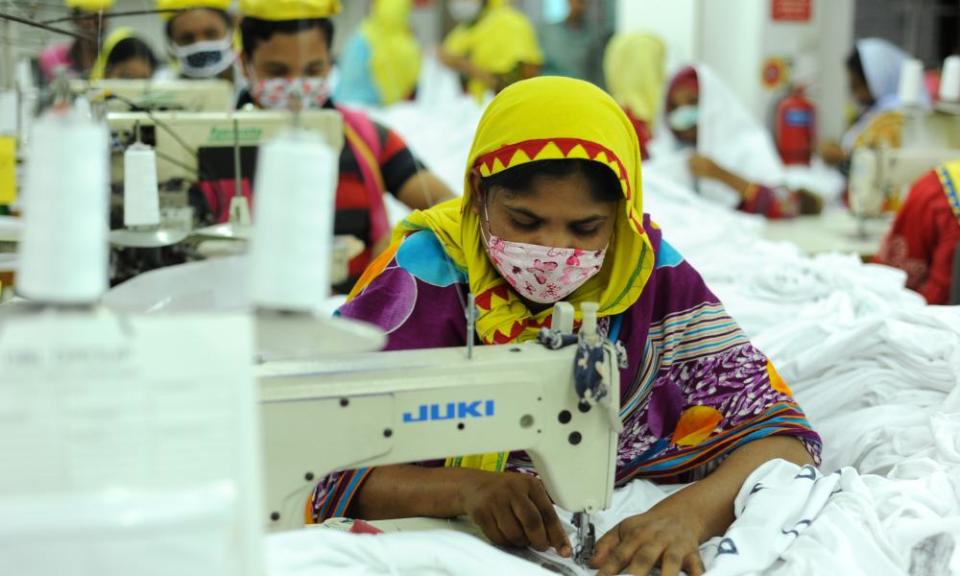9 ways the private sector can use water more efficiently

1 | Don’t rely solely on technology
We need to fundamentally change how we relate with water. Mere technical improvements will not create conditions for the substantial change that is demanded by prevailing challenges, especially those that climate change precipitates. Leo Saldanha, coordinator, Environment Support Group, Bangalore, India, @leofsaldanha, @E_S_
2 | Re-use industrial water in agriculture
We should not consider wastewater as a waste but as a source of value. This is the core idea of Water4crops, one of the largest EU-India collaborative research projects. Industry effluents treated through specific biotechnological processes can provide water safe for reuse for irrigation, enriched in nutrients (what agronomists call irrigation water with high fertility value) that can boost yields. Water4crops’ research showed that the reuse of treated wastewater to irrigate fields could increase yields of up to 40% in vegetables such as okra, aubergine and chillies compared with those irrigated by fresh water. Suhas Pralhad Wani, research programme director, Asia, International Crop Research Institute for the Semi-Arid Tropics, Hyderabad, India, @ICRISAT
3 | Use data to show that environmental risks are business risks
The private sector increasingly realises that environmental risks, such as water scarcity, translate into business risks. However, mitigating approaches may be challenging to operationalise. This is a gap that we can help close by providing better data and creating awareness of solutions that work. Katharina Felgenhauer, public-private partnerships, International Water Management Institute (IWMI), Accra, Ghana, @IWMI_
4 | Enact stronger legislation
Legislation in some countries, especially in Latin America, lag behind in what is needed. In Mexico there are a lot of restrictions to what you can do with treated water. For example, we treat 100% of our water, however, by law, we need to pour our water into contaminated water bodies, instead of being able to use it. There have been shifts in legislation around water in Latin America in the past 10 years that are interesting. These changes have been studied by the UN’s ECLAC (Economic Commission for Latin America and the Caribbean). However, the study found that there is still a lot to do in bringing legislation up to date with current water issues such as climate change. Countries like the Netherlands are spearheading innovation around law development by working towards integrated water legislation. Carlos Hurtado, sustainable development of water resources manager, Femsa Foundation, Monterrey, Mexico, @FEMSA
5 | Encourage textile factories to reduce water use
Over the past six years Stockholm International Water Institute (SIWI) has worked with Swedish textile companies such as H&M, KhappAll and Indiska, which do not control their production chain. Most of them buy garments from privately owned factories in developing countries. If any one of them were to place pressure on one of these factory owners to improve water management practise the owner is likely to just to turn to the competition and supply them. SIWI convened the textile companies and the factory owners and could find out from the factory owners that their largest costs (after labour) were energy and chemicals. Then we could introduce ways of saving them energy and chemicals through improved manufacturing and increased recycling. This made the factory owners happy, but also led to reduced water use and less pollution. Anton Earle, director, Africa regional centre, SIWI, Pretoria, South Africa, @siwi_water
6 | Select water champions
Senior level leadership/champions within companies can help drive improved performance on water resource management. For example, the WBCSD WASH in the workplace pledge has been signed by leading company CEOs such as Unilever and Diageo. This helps drive performance among peers and ultimately raises the bar. Ruth Romer, private sector adviser, WaterAid, London, UK, @WaterAidUK
7 | Help farmers to calculate the right amount of water for crops
Farmers tend to overestimate crop water requirements, which leads to wastage. We developed a water impact calculator to advice farmers on the optimal irrigation needs depending on crops. This was supported by a consortium of well-known agribusiness companies (Danone, Unilever, Nestlé, Coca-Cola) that has formed the Sustainable Agriculture Initiative. Suhas Pralhad Wani
8 | Use smart metres for better water governance
Smart remote-controlled tamper-proof metres are critical to ensure responsible water use in industry. This requires community surveillance of water demand, use, reuse and disposal. No regulation that works independent of community surveillance is effective. So, yes, metres are as good as the democratic quality of the surveillance. Else, as in India, there will be widespread fudging in industrial use of water, and worse, in the disposal of untreated effluents and sewage, a problem that is plaguing environmental regulatory agencies, civic bodies and the courts too. So really, it is about water governance. The more democratic, accountable and transparent decisions relating to water are, the wiser will be the use of such waters. Leo Saldanha
9 | Follow a water management model
The WWF water stewardship framework provides a great model for starting the journey towards more effective water resource management. Companies will be at different stages of progress along the stewardship journey and that is fine, the framework provides different entry points. The first step is awareness – companies should be aware of their water use and consumption and how this might impact the surrounding environment. Ruth Romer
Read the full Q&A here.
Join our community of development professionals and humanitarians. Follow @GuardianGDP on Twitter.

 Yahoo News
Yahoo News 